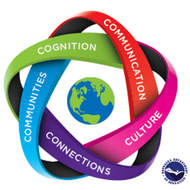
(View Complete Item Description)
SYNOPSIS: This lesson explores ways to reduce carbon emissions through the reduction of disposable plastics in daily routines.
SCIENTIST NOTES: We have a problem with plastics; they are everywhere. And they are bad for the climate and our health. This lesson shows how some countries are trying to reduce the use of plastics. This lesson passed our scientific review process.
Tenemos un problema con los plásticos; están por todas partes. Y son malos para el clima y nuestra salud. Esta lección muestra cómo algunos países están tratando de reducir el uso de plásticos. Esta lección pasó nuestro proceso de revisión científica.
POSITIVES:
-This lesson can easily be integrated into a unit on daily routines, the environment, or the present tense.
-Students are exposed to ways that Latin American countries are leading the way in solving the plastics problem.
-The lesson engages students with two games, Quizlet live and Kahoot.
-The vocabulary related to plastic items is scaffolded so that students can independently navigate the Spanish-language websites and complete the final project with confidence.
ADDITIONAL PREREQUISITES:
-The activities presume novice-high Spanish-language proficiency.
-Students should be familiar with reflexive verbs in the present tense, verbs like gustar to express opinions, and daily routine vocabulary.
-To prepare to teach this lesson, teachers can learn about plastics and recycling.
-This NPR/Frontline report from 2020 and this in-depth Greenpeace España report analyze the limits of recycling as a solution to the plastic problem.
-Bioplastics are made from natural ingredients such as corn. This flier, produced by Break Free From Plastic, provides data about the drawbacks of this solution.
DIFFERENTIATION:
-The lesson can be shortened by eliminating the vocabulary activities in the Inquire section or eliminating either Parte 1 or Parte 2 in the Inspire section.
-The lesson can be extended for advanced students by including supplemental reading and listening activities.
-Students can explore the 2024 international treaty on plastics using this summary in Spanish of the 22 foundational points.
-This RTVE report "La Unión Europea dice adiós al plástico de un solo uso" includes text and a short video.
-Recicladores de base are an important part of the recycling process in many countries. Marce La Recicladora from Colombia has an informative YouTube channel.
Material Type:
Lesson Plan
Author:
Liz Ransom




















